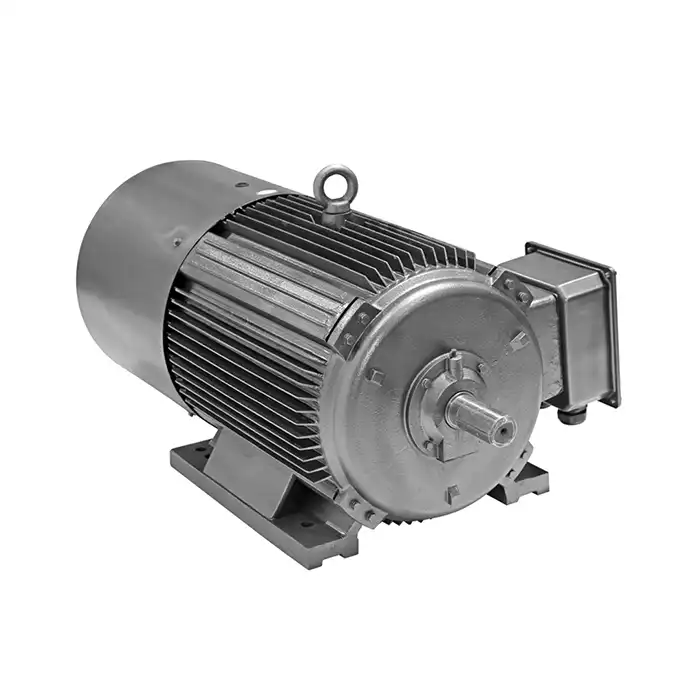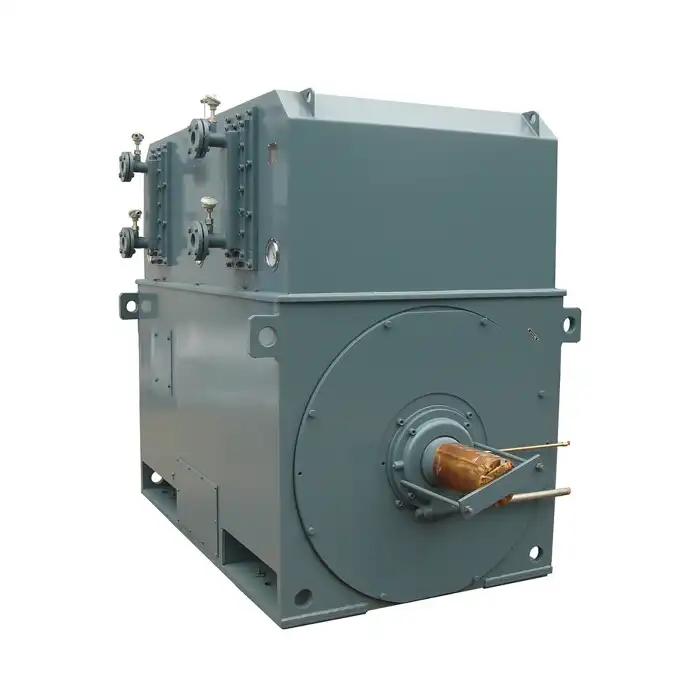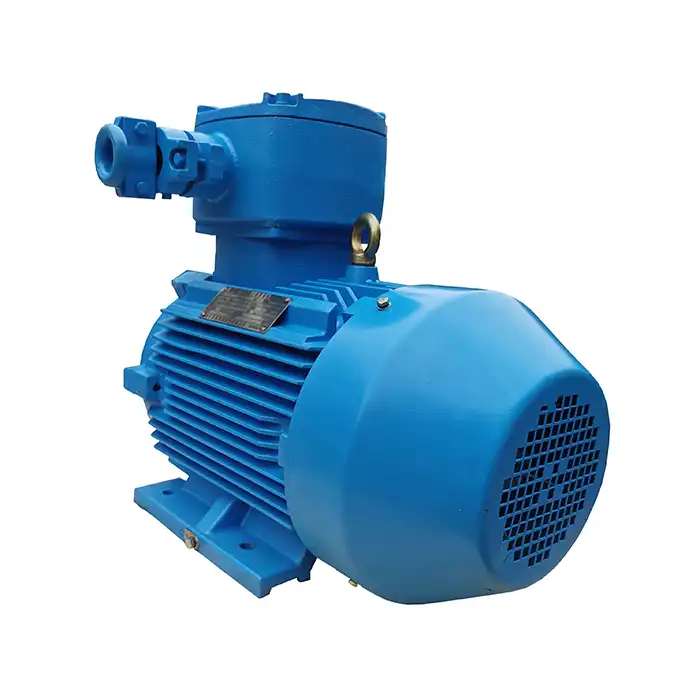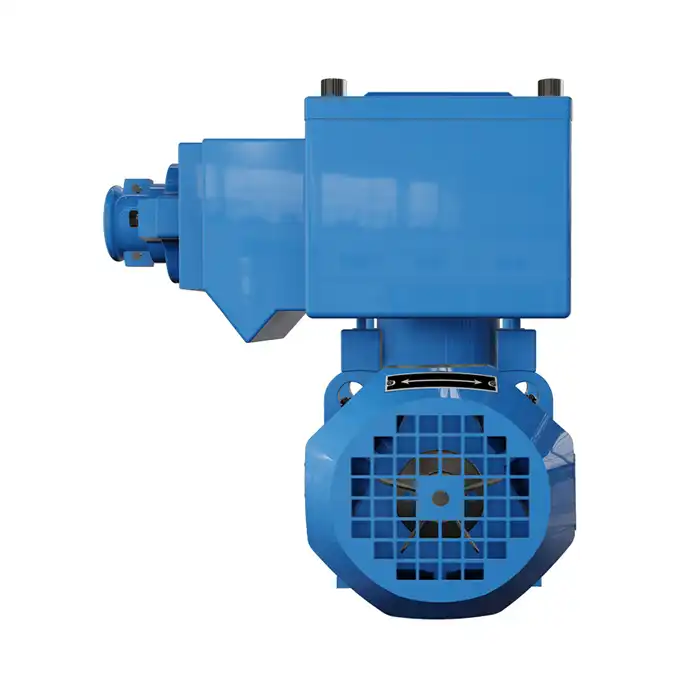Understanding medium voltage induction motors can seem overwhelming at first, but these powerful machines form the backbone of countless industrial operations worldwide. Operating typically between 1,000V and 13.8kV, these electric motors bridge the gap between standard low-voltage equipment and specialized high-voltage systems. Whether you're managing a manufacturing facility, overseeing HVAC systems, or working in renewable energy, grasping the fundamentals of these motors will help you make informed decisions about your power equipment needs and operational efficiency.
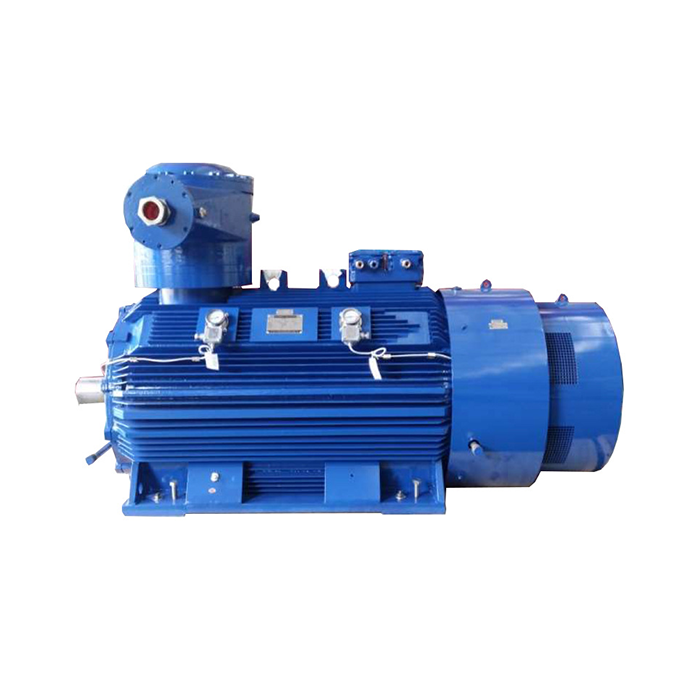
Series:YBBP-HV
Voltage range:3000V±5%,3300V±5%,6000V±5%,6600V±5%,10000V±5%,11000V±5%
Power range:185-1800 kW
Application:compressors, water pumps, crushers, cutting machine tools, transportation machinery.
Advantage: wide modulation range, high efficiency and energy saving, low noise, long life, high reliability.
Others: SKF, NSK, FAG bearings can be replaced according to customer requirements.
What Are Medium Voltage Induction Motors?
Medium voltage induction motors represent a specific category of three-phase power equipment designed to handle substantial electrical loads while maintaining operational efficiency. These electric motors utilize electromagnetic induction principles to convert electrical energy into mechanical motion, making them indispensable across various industrial applications.
The voltage classification can sometimes blur boundaries in practical applications. Motors operating up to 690V fall into the low-voltage category, while medium voltage typically encompasses 1,100V to 7,000V range. However, industrial plants commonly request medium voltage solutions starting from 3,000V or 3,300V and higher. Motors exceeding 10,000V generally enter the high-voltage classification.
These motors feature specialized motor winding configurations that accommodate higher voltage requirements. The squirrel cage rotor design remains popular due to its robust construction and minimal maintenance requirements. Unlike their low-voltage counterparts, medium voltage motors incorporate enhanced motor insulation systems to safely handle increased electrical stress.
Modern medium voltage motors often integrate with variable frequency drives to optimize torque control and energy consumption. This combination allows precise speed regulation while maintaining excellent power factor characteristics across varying load conditions.
Key Components and Design Features
Medium voltage motor design incorporates several distinctive elements that differentiate them from standard industrial motors. The motor winding arrangement follows specific patterns to ensure optimal spacing between turns, allowing improved airflow circulation around coils for enhanced heat transfer.
The cooling system plays a crucial role in motor performance and longevity. Advanced ventilation designs facilitate heat dissipation, while specialized cooling configurations accommodate different environmental conditions. Some applications require closed-loop cooling systems to maintain consistent operating temperatures.
Motor insulation systems receive particular attention in medium voltage applications. Multiple insulation layers protect against electrical breakdown while maintaining flexibility for thermal expansion. These insulation systems must withstand both electrical stress and mechanical forces during operation.
Slip rings appear in wound-rotor designs, though squirrel cage configurations dominate most applications. The rotor construction affects starting characteristics, load capacity, and overall motor efficiency. Manufacturers optimize rotor designs based on specific application requirements.
Motor protection systems integrate multiple safeguards including thermal monitoring, vibration sensors, and electrical protection devices. These systems prevent damage from overload conditions, phase imbalances, and environmental factors.
Industrial Applications Across Sectors
Manufacturing facilities extensively utilize medium voltage induction motors for heavy-duty applications. Automotive plants employ these motors for assembly line conveyors, robotic systems, and precision machinery. Aerospace manufacturing requires motors capable of driving specialized equipment while maintaining strict quality standards.
Process control applications demand reliable motor performance for critical operations. Pumps, compressors, and valves throughout chemical processing facilities depend on medium voltage induction motors for consistent operation. Food processing industries require motors that meet sanitary standards while delivering dependable performance.
HVAC and refrigeration systems in large commercial buildings rely on medium voltage motors for chillers, cooling towers, and air handling units. These applications require motors capable of handling varying loads while maintaining energy efficiency.
Power generation facilities utilize medium voltage motors for auxiliary equipment including cooling water pumps, fuel handling systems, and emission control equipment. Renewable energy installations incorporate these motors in wind turbine pitch control systems and solar tracking mechanisms.
Water treatment facilities depend on medium voltage motors for pumping stations, filtration systems, and chemical dosing equipment. Municipal water distribution networks require reliable motors capable of continuous operation with minimal maintenance requirements.
Selection Criteria and Performance Considerations
Choosing appropriate medium voltage motors requires careful evaluation of multiple factors. Load capacity analysis determines the required power output and torque characteristics for specific applications. Understanding load variations helps select motors with appropriate service factors and overload capabilities.
Voltage regulation considerations affect motor selection, particularly in facilities with fluctuating power supply conditions. Motors must operate efficiently across acceptable voltage ranges while maintaining performance standards. Power factor requirements influence motor design and may necessitate power factor correction equipment.
Environmental conditions significantly impact motor selection. Temperature extremes, humidity levels, and corrosive atmospheres require specialized motor designs and protective features. Hazardous location applications demand explosion-proof constructions with appropriate certifications.
Starting requirements vary considerably between applications. Some installations require soft-start capabilities to minimize electrical disturbances, while others need high starting torque for heavy loads. Motor starter selection directly affects system performance and electrical infrastructure requirements.
Motor efficiency ratings influence operational costs over the motor's lifetime. Higher efficiency motors typically justify increased initial investment through reduced energy consumption. However, efficiency optimization must balance with other performance requirements and application constraints.
Installation and Maintenance Best Practices
Proper installation procedures ensure optimal motor performance and longevity. Foundation design must accommodate motor weight, vibration characteristics, and thermal expansion. Alignment precision affects bearing life and overall system efficiency.
Electrical connections require specialized techniques for medium voltage induction motor applications. Cable selection, termination methods, and grounding systems must meet electrical codes and safety standards. Proper cable management prevents electrical interference and mechanical damage.
Motor maintenance programs should address both preventive and predictive maintenance strategies. Regular inspections identify potential issues before they cause equipment failures. Vibration analysis, thermal imaging, and electrical testing provide valuable insights into motor condition.
Lubrication schedules vary based on bearing types, operating conditions, and manufacturer recommendations. Proper lubricant selection and application techniques prevent premature bearing failure while maintaining optimal performance.
Motor protection system testing ensures reliable operation during fault conditions. Regular calibration of protective devices prevents nuisance trips while maintaining equipment protection. Documentation of maintenance activities helps track motor performance trends and predict replacement needs.
Troubleshooting Common Issues
Motor overheating represents one of the most common problems in medium voltage applications. Inadequate ventilation, excessive loads, or cooling system malfunctions can cause thermal damage. Regular temperature monitoring helps identify developing problems before severe damage occurs.
Vibration problems often indicate mechanical issues such as misalignment, bearing wear, or rotor imbalance. Systematic vibration analysis helps identify root causes and appropriate corrective actions. Prompt attention to vibration issues prevents secondary damage to connected equipment.
Electrical faults including insulation breakdown, winding failures, or connection problems require specialized diagnostic techniques. Insulation resistance testing, polarization index measurements, and surge testing help assess electrical condition.
Starting problems may result from electrical supply issues, mechanical binding, or control system malfunctions. Systematic troubleshooting procedures help isolate problem sources and implement appropriate solutions.
Performance degradation often develops gradually, making detection challenging without proper monitoring systems. Regular performance testing helps establish baseline conditions and track changes over time.
Conclusion
Medium voltage induction motors serve as essential components across numerous industrial applications, from manufacturing automation to renewable energy systems. Understanding their design principles, selection criteria, and maintenance requirements helps ensure optimal performance and longevity. These motors offer excellent load capacity, motor efficiency, and reliability when properly specified and maintained. Success depends on careful consideration of application requirements, environmental conditions, and performance expectations. Partnering with experienced suppliers like XCMOTOR provides access to quality equipment, technical expertise, and comprehensive support services that maximize your investment value and operational success.
Trust XCMOTOR for Your Medium Voltage Motor Solutions
Selecting the right medium voltage induction motor supplier requires partnering with experienced professionals who understand your unique application requirements. XCMOTOR specializes in providing comprehensive power equipment solutions tailored to diverse industrial needs across manufacturing, HVAC, energy, and utility sectors.
Our commitment to delivering high energy efficiency, low energy consumption motors with stable power output sets us apart in the competitive marketplace. Whether you need motors for process control applications, renewable energy projects, or critical infrastructure, our technical expertise ensures optimal equipment selection and performance.
XCMOTOR maintains exclusive partnerships with trusted component manufacturers, guaranteeing original parts and reliable performance. Our fast delivery capabilities minimize project delays, while our comprehensive 30-day return policy provides peace of mind for your investment decisions.
Our dedicated support team operates seven days a week, including weekends, ensuring prompt responses to technical inquiries and after-sales service needs. This commitment to customer service excellence extends throughout the entire project lifecycle, from initial consultation through ongoing maintenance support.
When you need a reliable medium voltage induction motor manufacturer, XCMOTOR delivers proven solutions backed by technical expertise and unwavering customer support. Our team stands ready to analyze your specific requirements and recommend optimal motor solutions for your applications.
Ready to discuss your medium voltage induction motor requirements? Contact us at xcmotors@163.com and experience the XCMOTOR difference in power equipment solutions.
References
- Chapman, Stephen J. "Electric Machinery Fundamentals, 5th Edition." McGraw-Hill Education, 2012.
- IEEE Standard 841-2009. "IEEE Standard for Petroleum and Chemical Industry - Premium Efficiency Severe Duty Totally Enclosed Fan-Cooled (TEFC) Squirrel Cage Induction Motors." Institute of Electrical and Electronics Engineers, 2009.
- Nasar, S.A. and Boldea, I. "The Induction Machine Handbook, 2nd Edition." CRC Press, 2010.
- NEMA Standards Publication MG 1-2016. "Motors and Generators." National Electrical Manufacturers Association, 2016.
- Finley, William R. and Burke, Paul E. "Troubleshooting Motor Problems." IEEE Industry Applications Magazine, Vol. 20, No. 4, 2014.
- International Electrotechnical Commission. "IEC 60034-1:2017 Rotating Electrical Machines - Part 1: Rating and Performance." IEC Publications, 2017.




